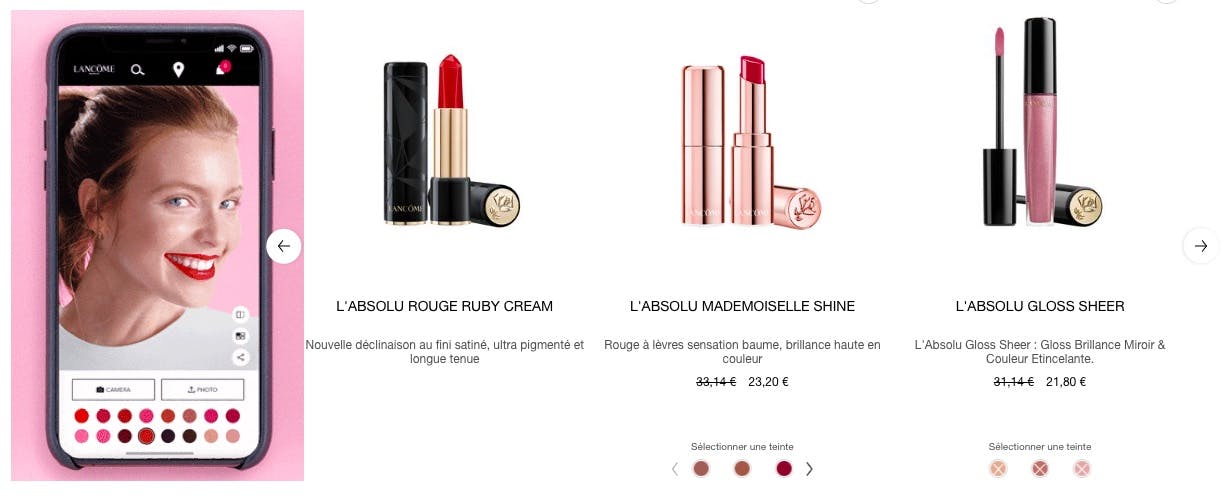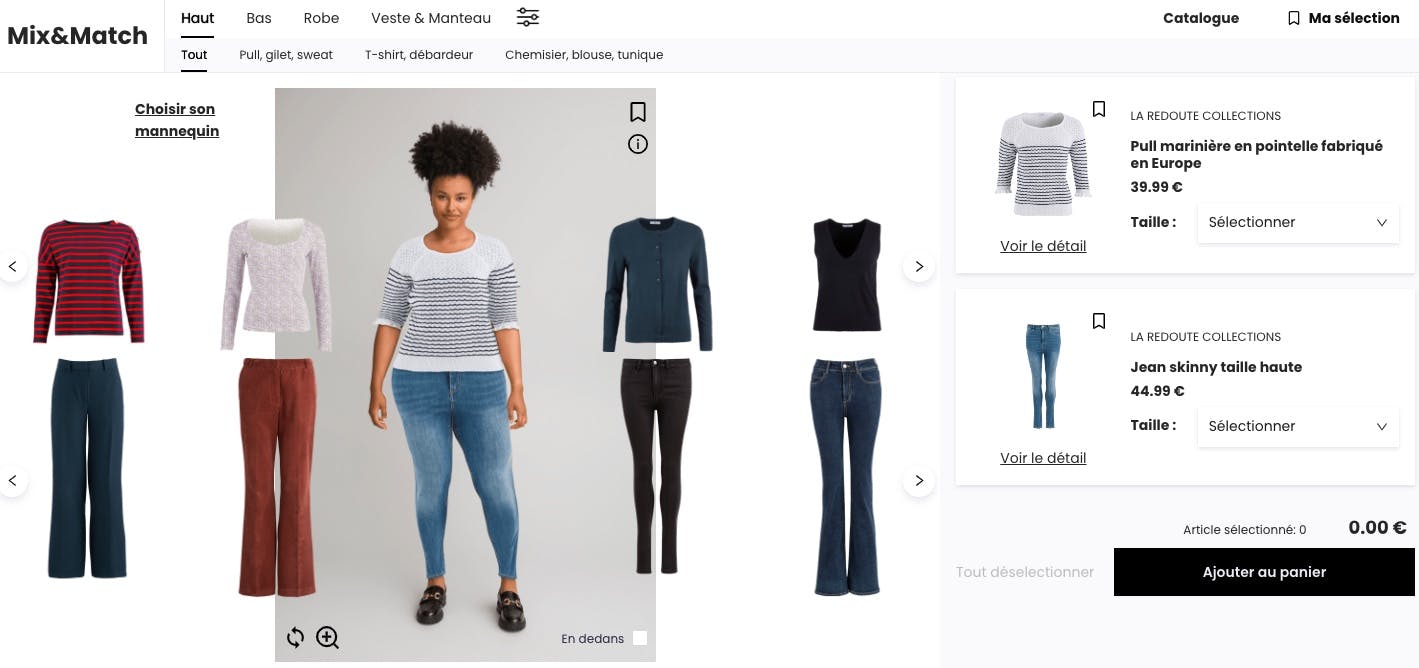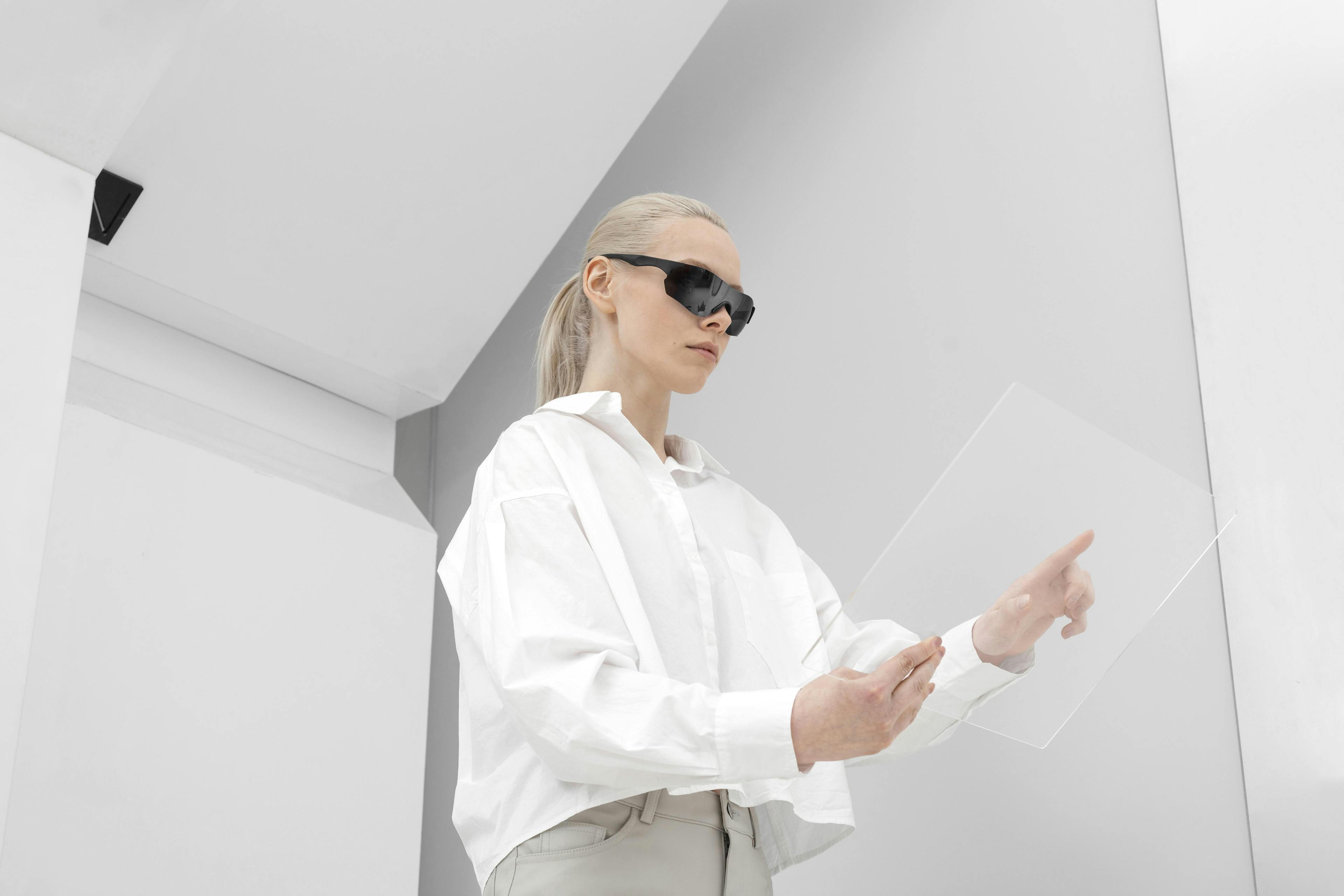
Virtual fitting: for which products?
Just a few years ago, trying on a garment from home was unimaginable. However, as consumer needs evolve, brands are stepping up initiatives to improve the e-commerce customer experience.
Virtual fitting is part of this strategy of innovation and improvement, offering brands the opportunity to meet ecommerce's customer needs. Those customers who can't stand crowded physical stores, and who have to go back and forth between shelves and fitting rooms.
While metavers are still far from universal acceptance, the range of virtual fitting technologies (augmented reality, virtual reality, etc.) is a must when it comes to enhancing the customer experience.
The pandemic: a trigger for e-tailers
With successive confinements, and the closure of stores during the pandemic, consumers massively switched to online shopping, without the possibility of being able to touch or test products.
This situation has led to an increase in returns, customer dissatisfaction and higher costs for brands.
Issues that brands in all sectors have had to confront.
Virtual make-up try-on for a personalized customer experience
In this competition for digital innovation, the cosmetics industry has been the first to distinguish itself, with a brand like Lancôme offering its customers the chance to try on their make-up in augmented reality.

In just a few clicks, Lancôme customers can test lipsticks, mascaras and foundations, and play with the different textures on offer.
Other brands such as Givenchy,Kiko , and Dior have also adopted the same strategy in order to deal with the crisis.
Virtual fitting of garment, to help customers project themselves into what they are buying
In the fashion sector, La Redoute, a major French retailer, has offered its customers the Mix&Match Experience created by Veesual.
This innovative experience allows shoppers to choose from different mannequins, according to body type, size or skin color, and create their outfit directly on the mannequin by assembling tops, bottoms, jackets, shoes and accessories.

Veesual's experience in terms of engagement and ROI for women's ready-to-wear also led to the deployment of Mix&Match for Jules, a men's brand.
Virtual furniture fitting to reduce returns
On the other hand, the furniture sector has also had to face up to this challenge. Ikea was a pioneer in this field with its Ikea Place application, which lets you project any product in the Ikea catalog to see how it would look inside: size, style...
Not only does this enable the consumer to project what it would look like, it also reduces the number of returns, which is particularly important for bulky, expensive-to-transport items such as furniture.
Virtual fitting: an advantage for e-tailers
One of the major problems for e-commerce retailers remains the lack of projection of consumers when shopping online. Virtual try-ons overcome this problem by enabling consumers to visualize and try on different products (clothing, accessories, make-up, etc.), helping to increase their intention to buy. Indeed, when consumers feel confident and can project how a product will look on them, they buy more easily and more quickly, which is not negligible for brands.
Moreover, with Veesual's Mix&Match solution for fashion brands, consumers can create their own looks by browsing the brands' various collections. This in turn increases conversion and the average shopping basket, thanks in particular to cross-selling (via look recommendations).
The other issue facing e-tailers is return after purchase. With virtual fitting, customers can visualize products more easily and get a much clearer picture of their purchasing decisions, helping to reduce returns.
A smooth, attractive customer experience
In addition to the higher conversion rate, virtual fitting helps brands to meet the evolving needs of consumers.
Indeed, with the emergence of new technologies (online fitting, metavers, 3D visualization...), consumers are becoming harder and harder to please. Offering an innovative and engaging e-commerce experience, such as virtual fitting, helps to simplify the customer journey and stimulate the purchasing act.
What's more, it offers a personalized experience for each consumer, reinforcing their sense of being "unique", and their attachment to a brand.
Being able to interact with products on the web, try them out, and share them on social networks is now a core functionality that e-tailers must offer to continue boosting customer engagement and loyalty.
RESOURCES
Discover our new article

"Complete the Look" Banners : is it enough ?
Scroll through any product page on a fashion eCommerce site and chances are you’ll see it: a “Wear it With” or “How to Style It” section, usually nestled just beneath the product. These are variations of what many fashion brands refer to as “Complete the Look” banners—a quick way to suggest complementary items that finish an outfit.

Has Online Shopping Lost Its Spark?
For years, e-commerce has delivered on convenience, speed, and scale. But something essential may have been lost along the way: the joy of shopping.

5 Ways Virtual Fitting Can Elevate Your Fashion Brand’s Online Presence
Virtual fitting has become a must-have in fashion e-commerce. Just like everything in fashion, ignoring the trend means falling behind. Virtual Fitting is more than a nice-to-have, it boosts your online shopping experience while making it more accessible and engaging for everyone.

